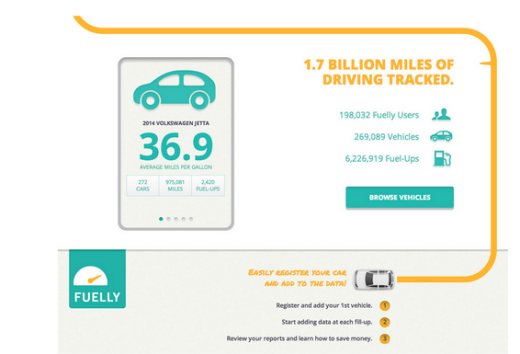
A startup’s website is typically its first public existence as a company. The website is its, “Hello, World!” statement, and the first marketing collateral for driving interest before the product or app is ready. But it doesn’t just break the ice with prospective users, it’s also a critical part in making a first impression with investors.
What Investors Are Really Looking for
With that said, good design is only as effective as its content. No matter what round of funding you are going after, there are specific pieces of information every startup website should have in order to appeal to investors. Namely, the “Four Ms”: Momentum, Management team, Market size and Money. Here’s how you can satisfy each of these requirements through the design of your site:
Momentum and Money
Investors want to see traction of your product because it hints at your ability to generate revenue. As one investor notes, “If customers and revenues are scaling quickly, that is a pretty solid proof of concept that instills confidence and excites an investor to write a check. The best way to showcase momentum on your site is through social proof.

“Fuelly utilizes user stats and results to offer social proof that its product is gaining traction.”
Social proof can be shown in statistics and figures, case studies, testimonials, press mentions or even company logos of high profile customers. Do some competitive research and find out which usage data or customers will help bring the most credibility to your site. For example, if your competitor has 10 times your user base, but your users spend more time engaged with your product, focus on that value proposition in your social proof.
Management Team
Investors want to know that the company they invest in has the right people in place to steer the ship and keep it from sinking. A good friend of mine, Dan Martell, once told me that the first thing he pays attention to in a startup is the leadership. “Do they inspire me? Do I want to spend time with them? Because at the end of the day, I’ll probably lose my money because that’s just the odds. The upside is if they have taught me something or inspired me,” he said.
Showcase your leadership and team on your site in a creative way; perhaps make it interactive to get people clicking. Provide information that truly matters, namely the unique experiences and skills each member brings to the table that affect the product’s potency. Be specific with the roles each person plays.

New Relic’s leadership page is interactive, allowing visitors to learn more about each person’s background and role, even follow them on social media or book them for a speakership opportunity.
When choosing which photos to use, consider first who you want to be as a brand. Having uniform photos of not just your team, but also your close advisors gives the appearance of a tightly knit group. In any case, choose carefully and then use that photo across all your major channels, including social media. Profile pictures act as a personal icon—using it on all your web properties helps make it more recognizable.
Market Size
As Sharon Wienbar says, “You can’t make a big company in a small market.” Demonstrating market size on your site requires some creativity. An effective method that many startups have employed is telling their disruptive story, “This is the size of the problem currently and this is how we are disrupting this market.” Consider a graphic representation of the market size to show, not tell about the total addressable market.
Another way to validate market size is to discuss your differentiation from direct competitors. Offer strong positioning and a clear product offering by summing up who the product is for, what else is out there and how you solve the problem differently in no more than two sentences.
Look to AngelList or ProductHunt to see how people explain their products. Come up with a statement and test it across different networks to find which one resonates best. Already have one? Test that too. Research is the key to validation.
Demonstrate Value
A startup’s website is its public face, where it can get a conversation about its product going with its target audience, and also where it can tell investors more about the problem they address and the solution they came up with. Answering the 4 Ms on your site, Momentum, Management, Market Size and Money, is the best way to demonstrate your value as a startup to a prospective investor, and get them interested enough to ask more questions.
Read Next: Crowdfunding vs VC Money – an entrepreneur’s perspective
Image credit: Shutterstock
Get the TNW newsletter
Get the most important tech news in your inbox each week.





